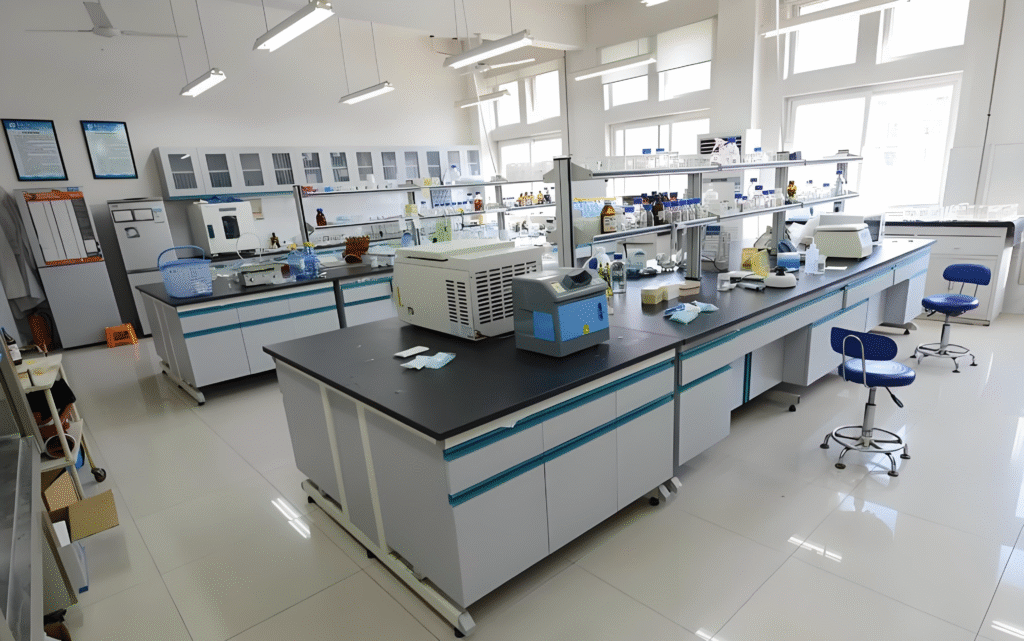Incubator in Laboratory: Definition, Types, and How It Works
An incubator in laboratory settings is essential equipment used across biological, pharmaceutical, and chemical research. These devices provide controlled environmental conditions that promote the growth, storage, and experimentation of microorganisms, cells, and tissues. Understanding what an incubator in laboratory operations does, the various types available, and how each one works is crucial for selecting the right model for scientific applications.
What Is an Incubator in Laboratory? (Definition)
An incubator in laboratory research is a temperature-controlled enclosure designed to create an optimal environment for growing and maintaining microbiological cultures, cell lines, and other biological samples.
It maintains stable conditions such as:
- Temperature
- Humidity
- CO₂ concentration (in specialized models)
- O₂ levels (in advanced hypoxia incubators)
- Air circulation and sterility
By providing a consistent and contamination-free environment, an incubator in laboratory applications plays a central role in research, diagnostics, and industrial production.
Why Are Laboratory Incubators Important?
An incubator in laboratory workflows supports processes that require:
- Cell culture growth
- Bacterial, yeast, or fungal incubation
- Stability testing
- Enzyme and biochemical reactions
- Pharmaceutical testing
- Controlled storage of biological samples
The ability of an incubator in laboratory environments to maintain precise and stable conditions directly affects experimental accuracy and reproducibility.

Types of Laboratory Incubators
Various designs of incubator in laboratory systems serve different scientific purposes. Below are the most commonly used types.
1. Standard Laboratory Incubator
These general-purpose incubators maintain a constant temperature, typically between RT+5°C to 60°C.
Applications:
- Microbial culture growth
- Sample drying and warming
- Food & water testing
- Biochemical reactions
Features:
- Forced-air or natural convection
- Uniform chamber temperature
- Simple operation
2. CO₂ Incubator
A CO₂ incubator is a specialized incubator in laboratory cell culture applications. It simulates physiological conditions by controlling:
- Temperature (usually 37°C)
- CO₂ concentration (5% standard)
- High humidity (≥90%)
Applications:
- Cell and tissue culture
- IVF
- Cancer research
- Immunology and virology studies
Features:
- High-temperature or UV sterilization
- HEPA filtration
- Water-jacketed or air-jacketed options
3. BOD Incubator (Biochemical Oxygen Demand)
This type of incubator in laboratory environmental studies is designed for low-temperature and highly stable conditions (5–60°C).
Applications:
- Water and wastewater analysis
- BOD testing
- Environmental research
4. Shaking Incubator
A shaking incubator combines incubation with orbital or linear shaking.
Applications:
- Cell suspension cultures
- Microbial fermentation
- Protein and enzyme reactions
Features:
- Adjustable shaking speed
- Uniform temperature during motion
5. Constant Temperature & Humidity Incubator
This incubator in laboratory QA testing provides precise control of both temperature and humidity.
Applications:
- Pharmaceutical stability test
- Material aging simulation
- Food testing
6. Anaerobic Incubator
An anaerobic incubator maintains an oxygen‐free atmosphere.
Applications:
- Anaerobic bacterial culture
- Gut microbiota studies
Features:
- Airlock system
- Gas mixture control
How Does a Laboratory Incubator Work?
Although each type of incubator in laboratory operations differs, all share similar working principles:
1. Temperature Control System
A heating system maintains the desired temperature.
Key components:
- Temperature sensor
- PID controller
- Heating elements
- Safety protection
2. Air Circulation
Two airflow methods:
- Natural convection
- Forced-air convection
Forced-air systems ensure temperature uniformity.
3. Humidity Control
Some incubator in laboratory designs use:
- Water trays
- Humidifiers
- Steam systems
High humidity prevents cell culture media from drying.
4. CO₂ and Gas Regulation
CO₂ incubators include:
- IR gas sensors
- Solenoid valves
- Gas control modules
5. Contamination Control
Modern incubators include:
- HEPA filters
- UV sterilization
- 90°C sterilization
- Antimicrobial stainless-steel chambers
Common Applications of Laboratory Incubators
An incubator in laboratory research is widely used in:
- Microbiology
- Cell biology
- Genetics
- Environmental science
- Pharmaceutical testing
- Food inspection
- Clinical diagnostics
Conclusion
An incubator in laboratory environments is indispensable for ensuring precise conditions required for microbial culture, cell biology, pharmaceutical testing, and environmental monitoring. With multiple types available—including standard incubators, CO₂ incubators, BOD incubators, constant temperature and humidity incubators, and shaking models—researchers can easily choose the right equipment based on their needs.
Labvv — Your Reliable Supplier for Laboratory Incubators
If you need a high-quality incubator in laboratory operations, Labvv provides a full range of models, including:
- General laboratory incubators
- CO₂ incubators (with 90°C high-temperature sterilization)
- BOD incubators
- Shaking incubators
- Constant temperature & humidity incubators
Labvv offers reliable performance, competitive pricing, and professional support.
👉 Visit: https://labvv.com
👉 Contact Us: https://labvv.com/labvv-contact-us/
👉 WhatsApp: https://wa.me/8613560386440
